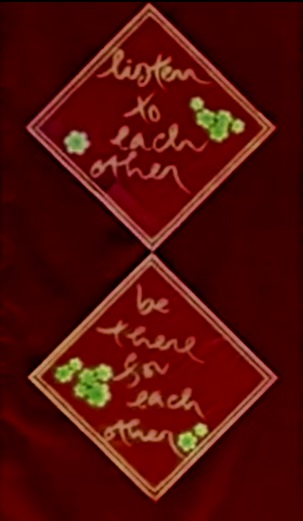|
The Honey Locust Sangha Caretaking Council (CTC)
Heartfelt thanks to Patrice Watson for creating this helpful and deep description of the CTC. The current Caretaking Council membership includes Mark Watson, Mike McMahon, Dave Watts, Jim Cox and Juanita Rice (OIs), Patrice Watson, Catherine Stremlau, and Mike McGann (Sangha-at-Large), and Tina Ray (Aspirant). Please see any CTC member with questions, concerns, or if you have an item you would like to have discussed at a CTC meeting. The Form and Function of the Care-Taking Council (CTC) The CTC is comprised of six to nine members to include representation from Order of Interbeing Members (OIs), OI Aspirants, and At-Large Sangha Members. Members will serve two-year terms which may be renewed for another term or ended based on the needs of the CTC and the CTC member. The CTC exists to help the sangha continue in harmony and happiness. It serves with the Order of Interbeing members (OIs), OI aspirants, other sangha committees and groups, and with the sangha as a whole, to make decisions about sangha activities. The CTC meets on a monthly basis. Any person wishing to make a contribution to the discussion, to add an item to the agenda, or to volunteer for an activity being discussed is encouraged to communicate those issues to any member of the council. Per our by-laws, the CTC is comprised of OIs, OI aspirants and sangha members. Non-OI members make a commitment to serving on the CTC for 2 years. Participating in any CTC meeting is a practice of open mindedness, deep listening, and loving, honest speech. Persons who serve on the CTC make a commitment to practicing this together and to helping others (including occasional participants) in this practice. CTCs tasks include paying attention to the workings of the sangha, listening to the views and concerns of all sangha members, communicating our own views and understandings to the others in the CTC, listening deeply to each other, and seeking understanding and consensus with respect to future plans. The CTC may make decisions on behalf of the sangha. The decisions are made by consensus. It is understood that such decision-making is done with the consent of the sangha. Any sangha member who believes that decisions are being wrongly made has the responsibility for the good of the sangha to help us change the decision-making process so that it works better. It is understood that some issues may come up in CTC meetings which are not appropriate for discussion in an open forum. In those cases the CTC may end the discussion and refer the topic to another body. Expressing an Interest in Being a Member of the CTC Any member who meets the criteria listed below is eligible to apply to become a member of the CTC. Membership is selected from among those who have expressed an interest when openings occur. Placing your name among those interested may not result in your selection in any given year, but you will be kept on the list for consideration each time openings occur and selections are considered (typically near the end of the year). If you wish to have your name removed from the list of those interested, let any current member of the CTC know. To be eligible you must:
https://forms.gle/JGuM6ZgAkHTGbztHA |
Sangha Body
When we live together in the Sangha, it becomes a body, and each one of us is a cell that body. If we are not part of the sangha body, we will be isolated, hungry, and needy, and we will not have a suitable environment for practice. We can visualize the Sangha body as a forest. Each member of the Sangha is a tree standing beautifully alongside the others. Each tree has its own shape, height, and unique qualities, but all are contributing to the harmonious growth of the forest. Looking at the trees standing steadily alongside each other like that, you can sense the beauty, solidity, and power of a sacred forest. - TNH |
